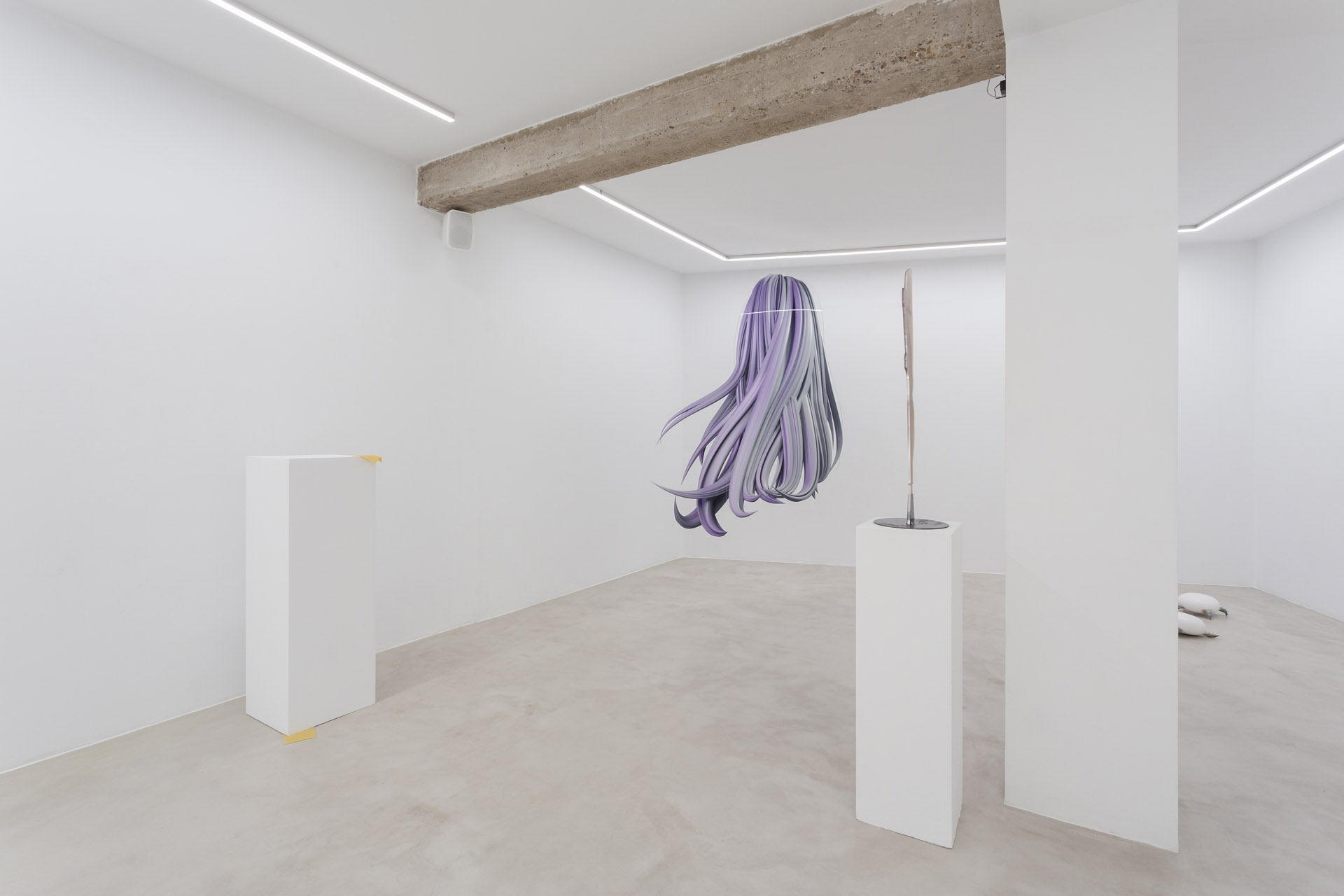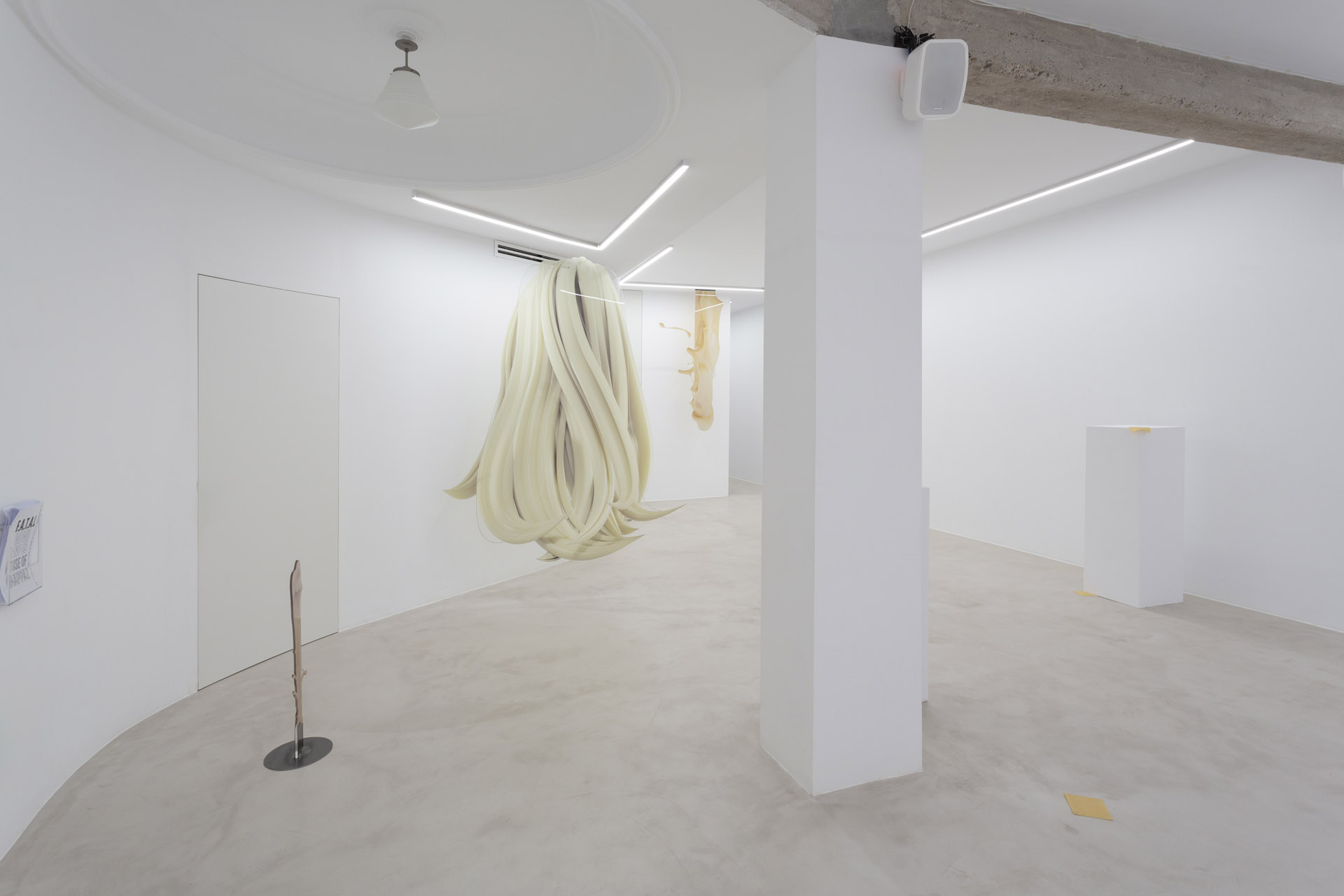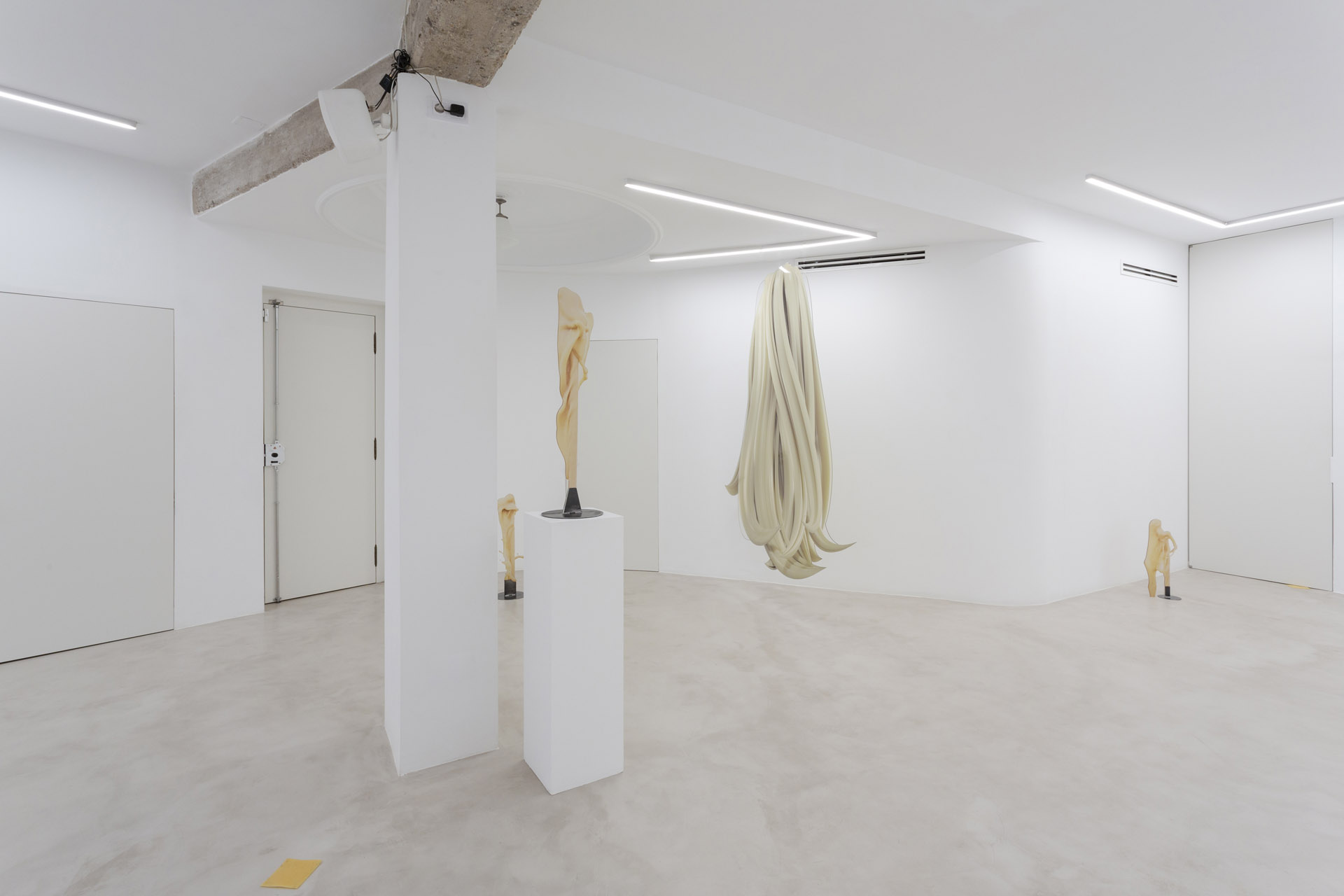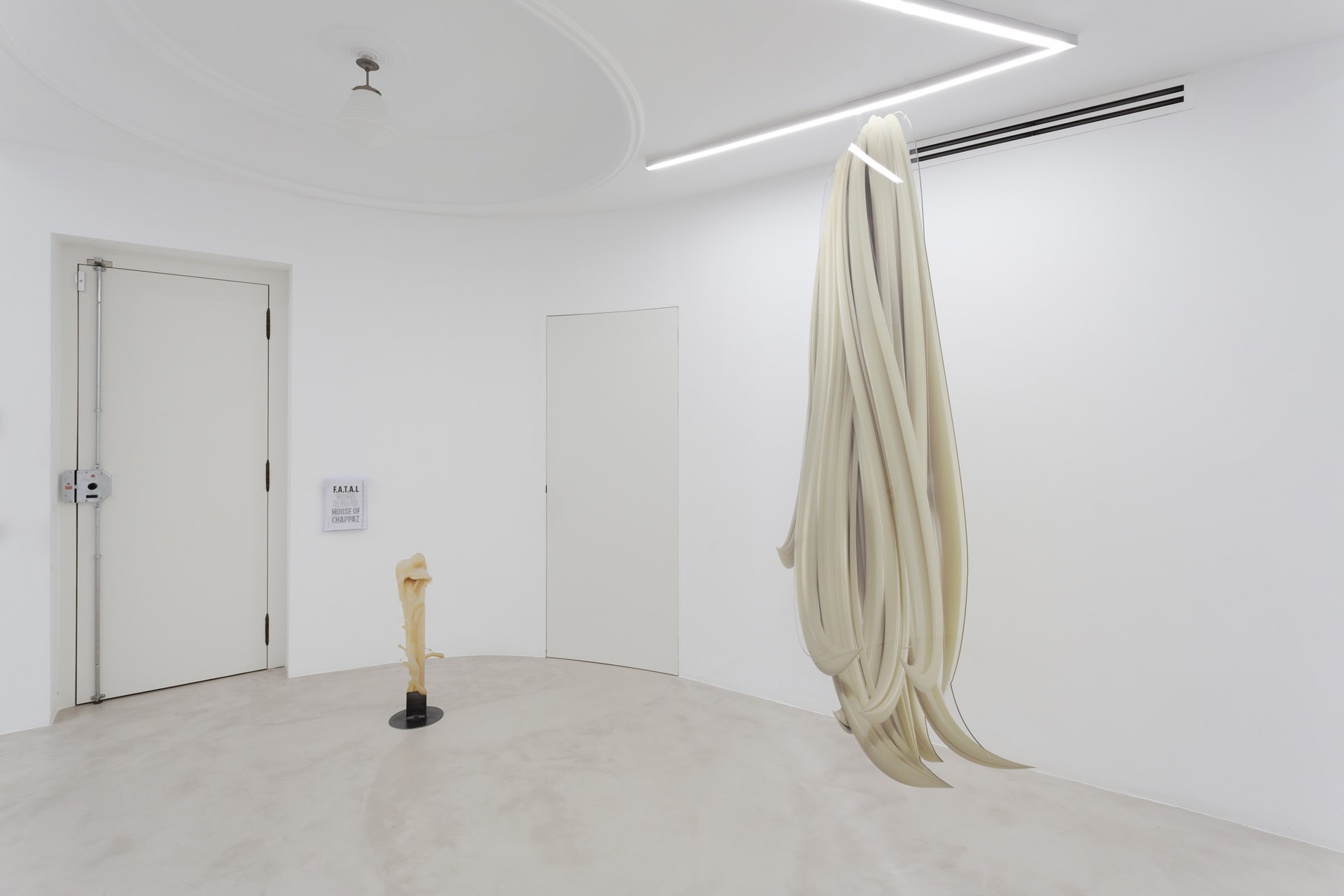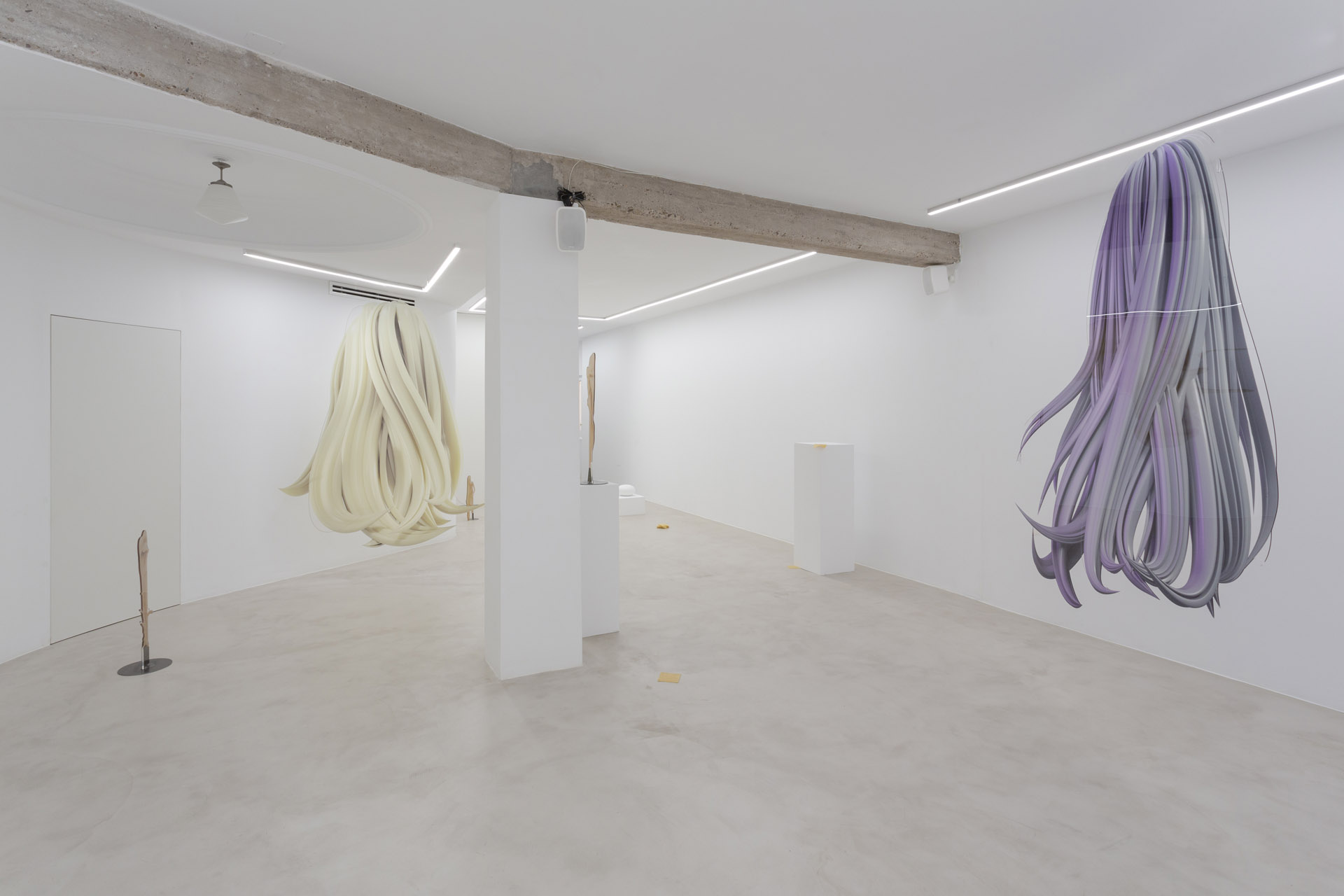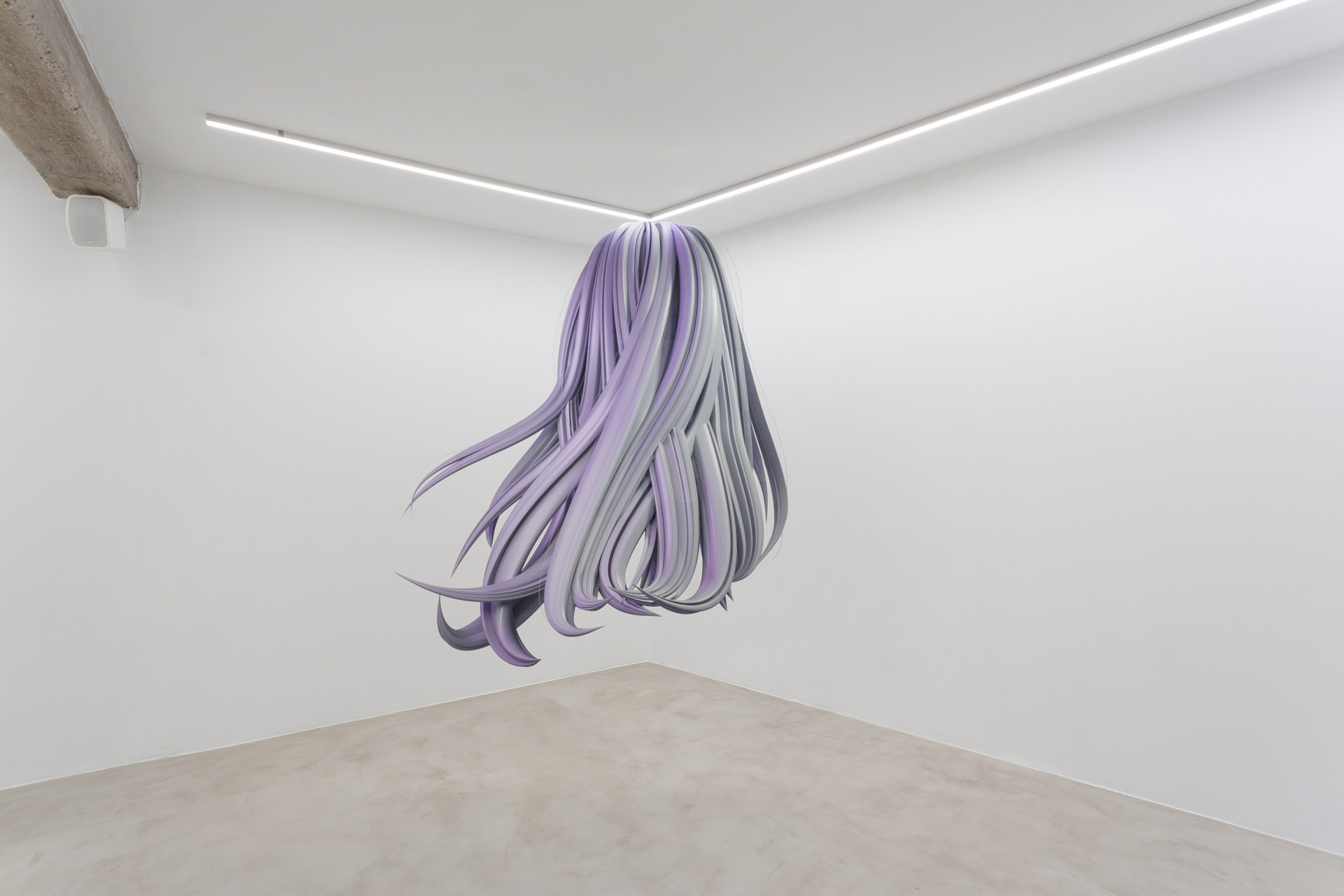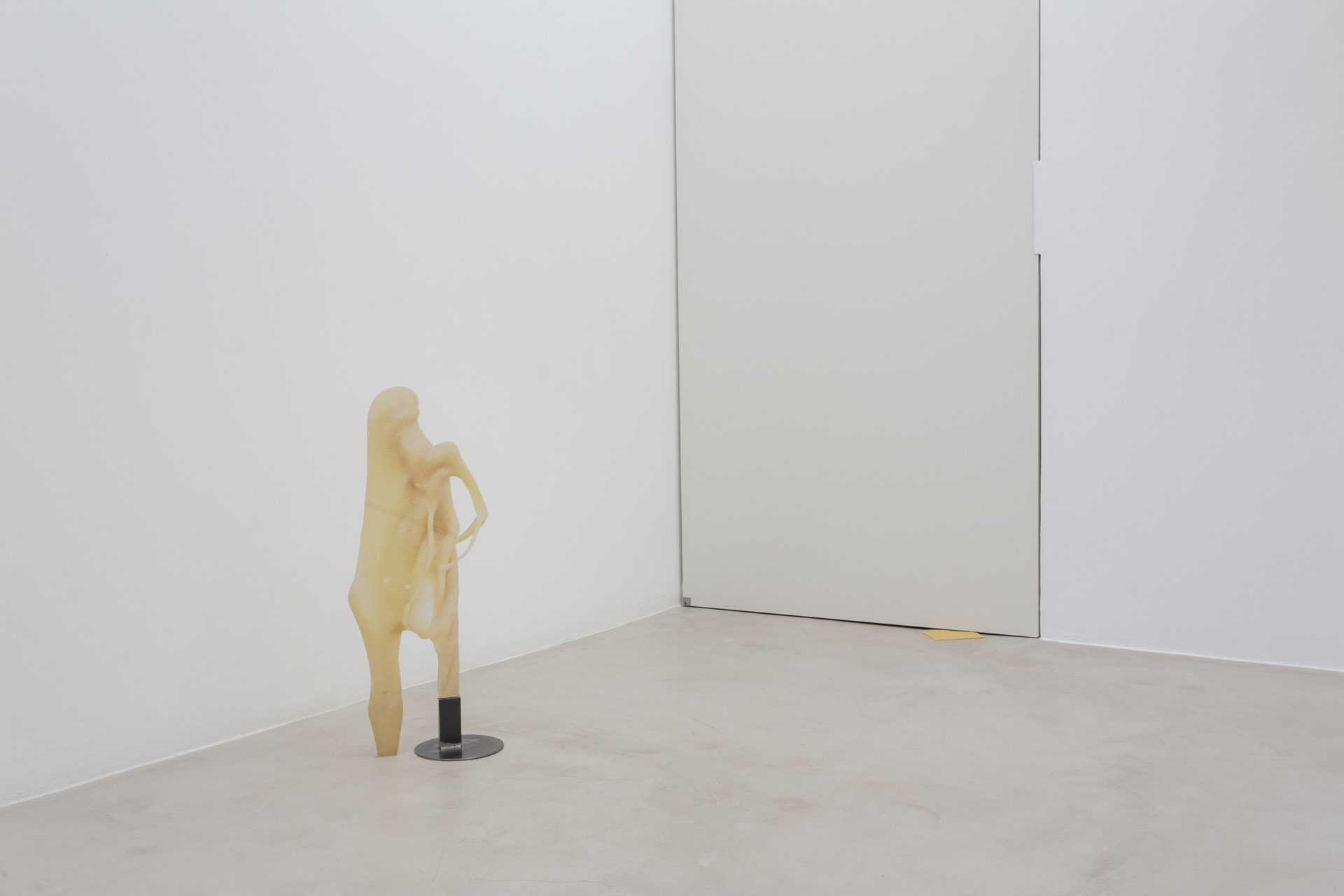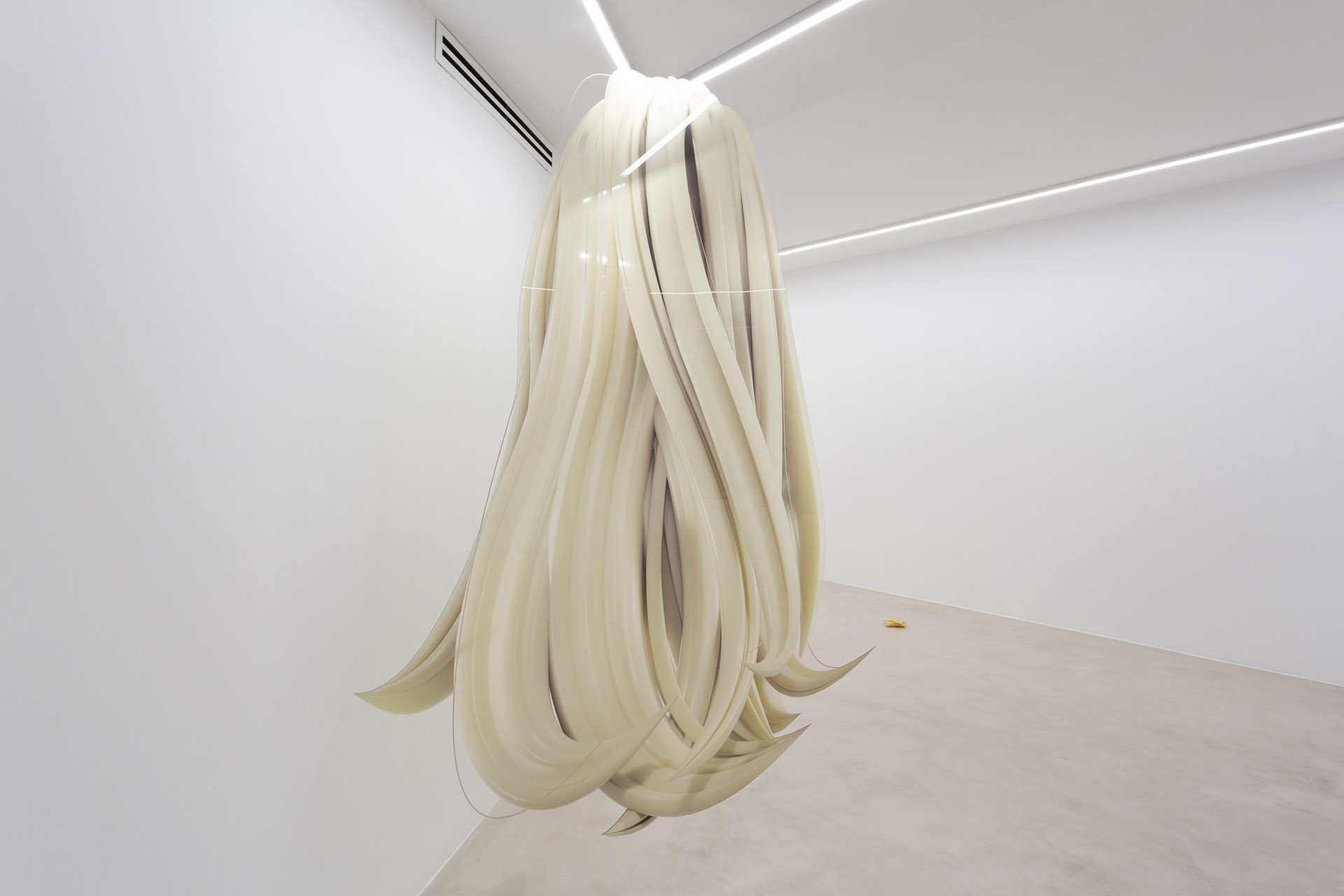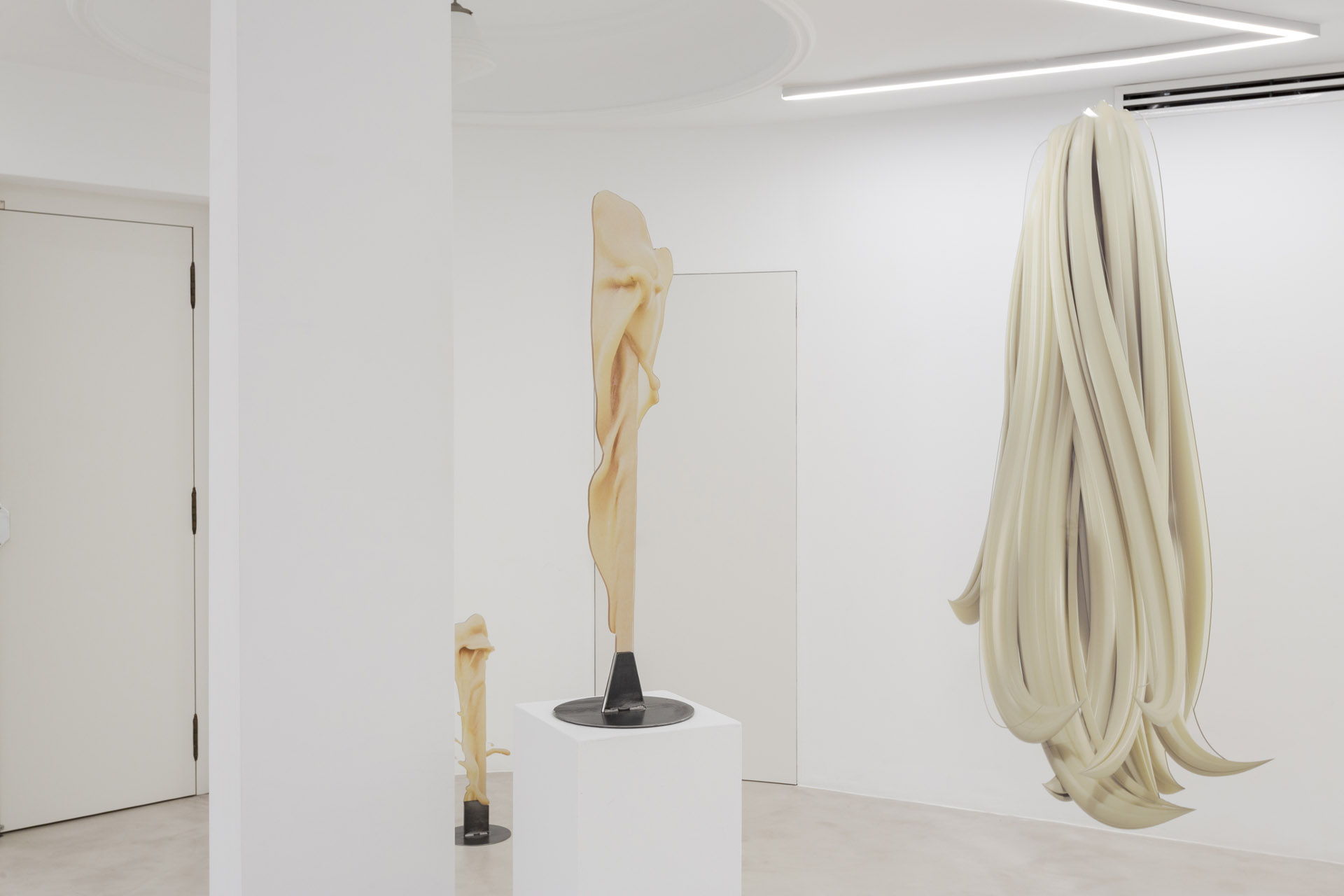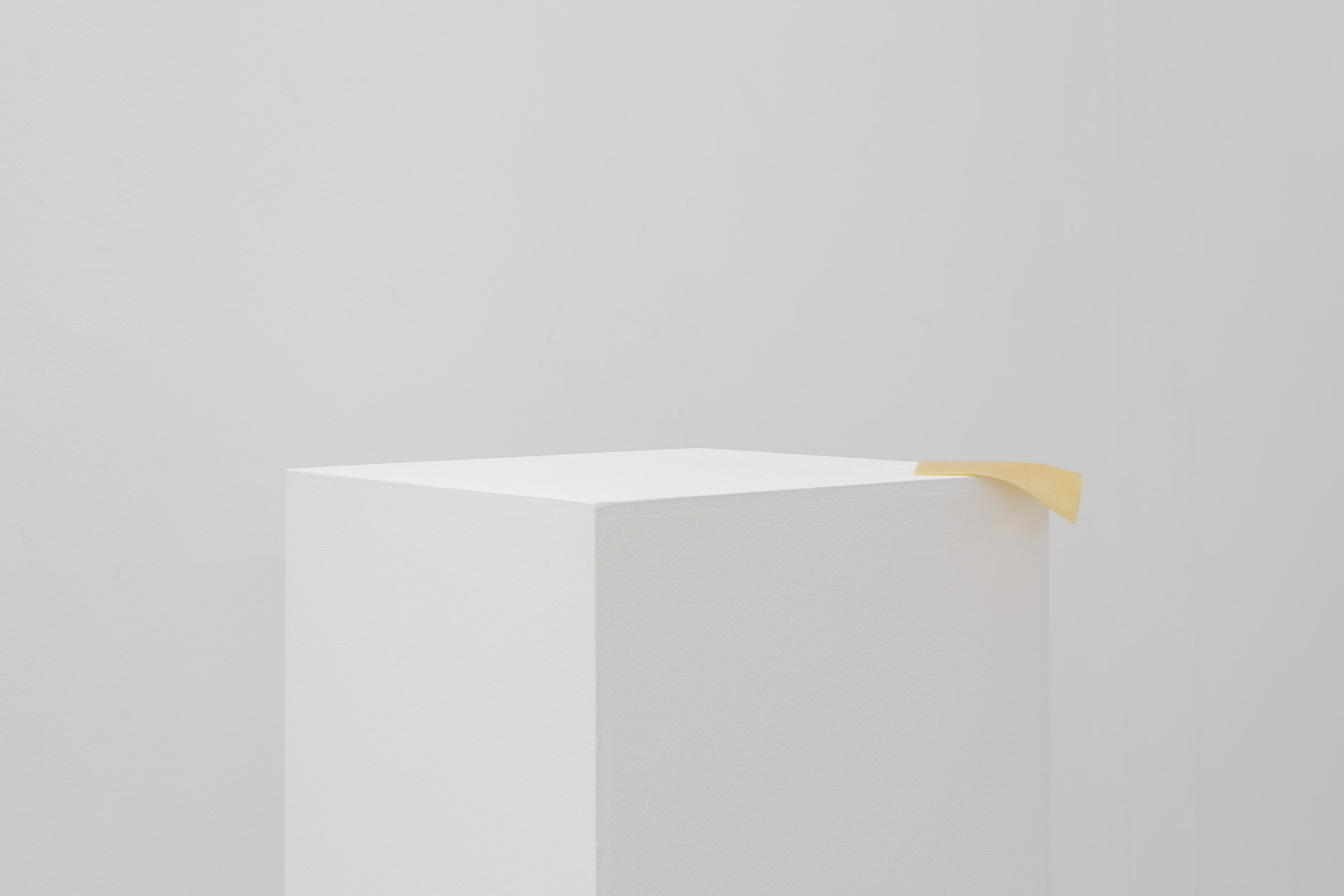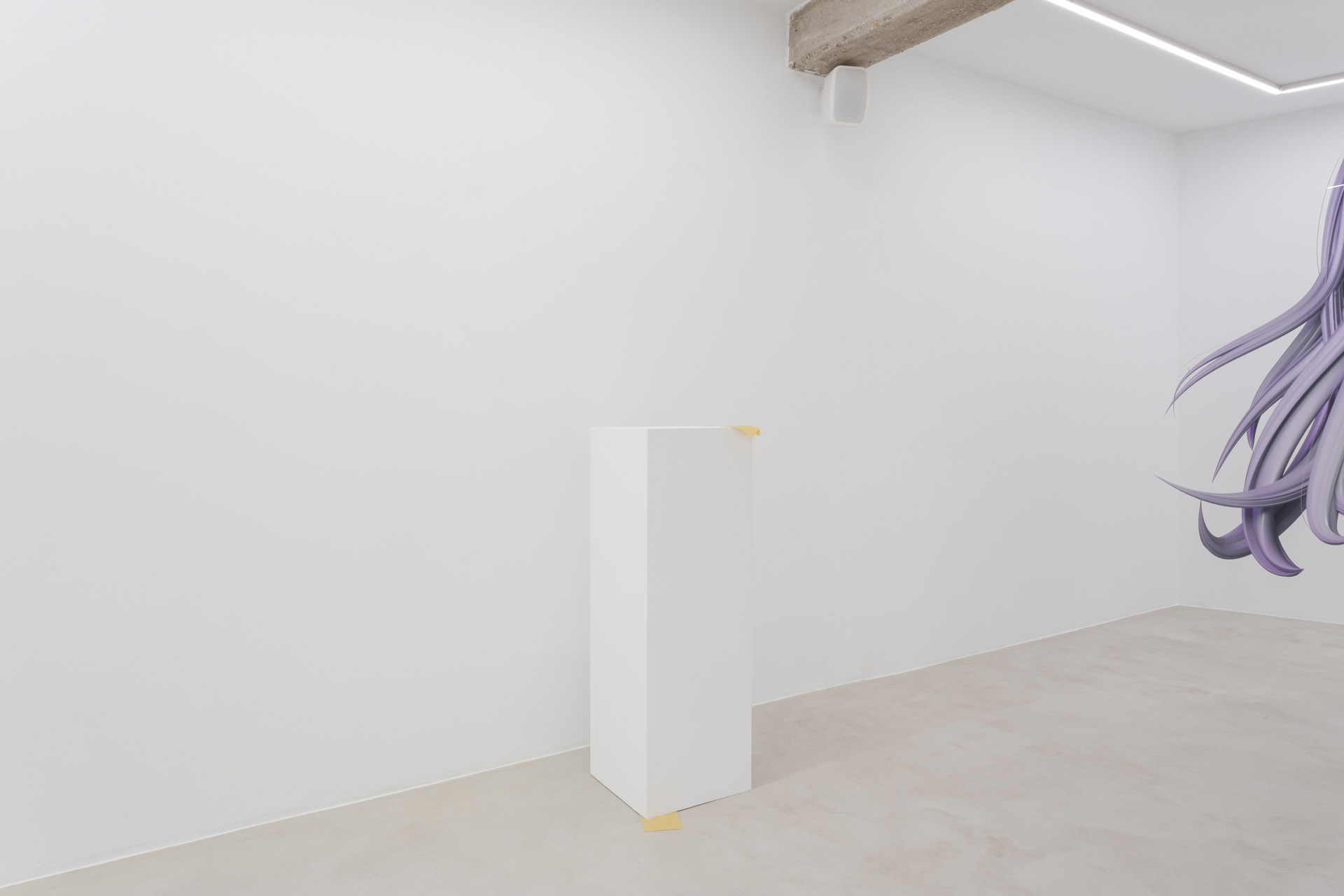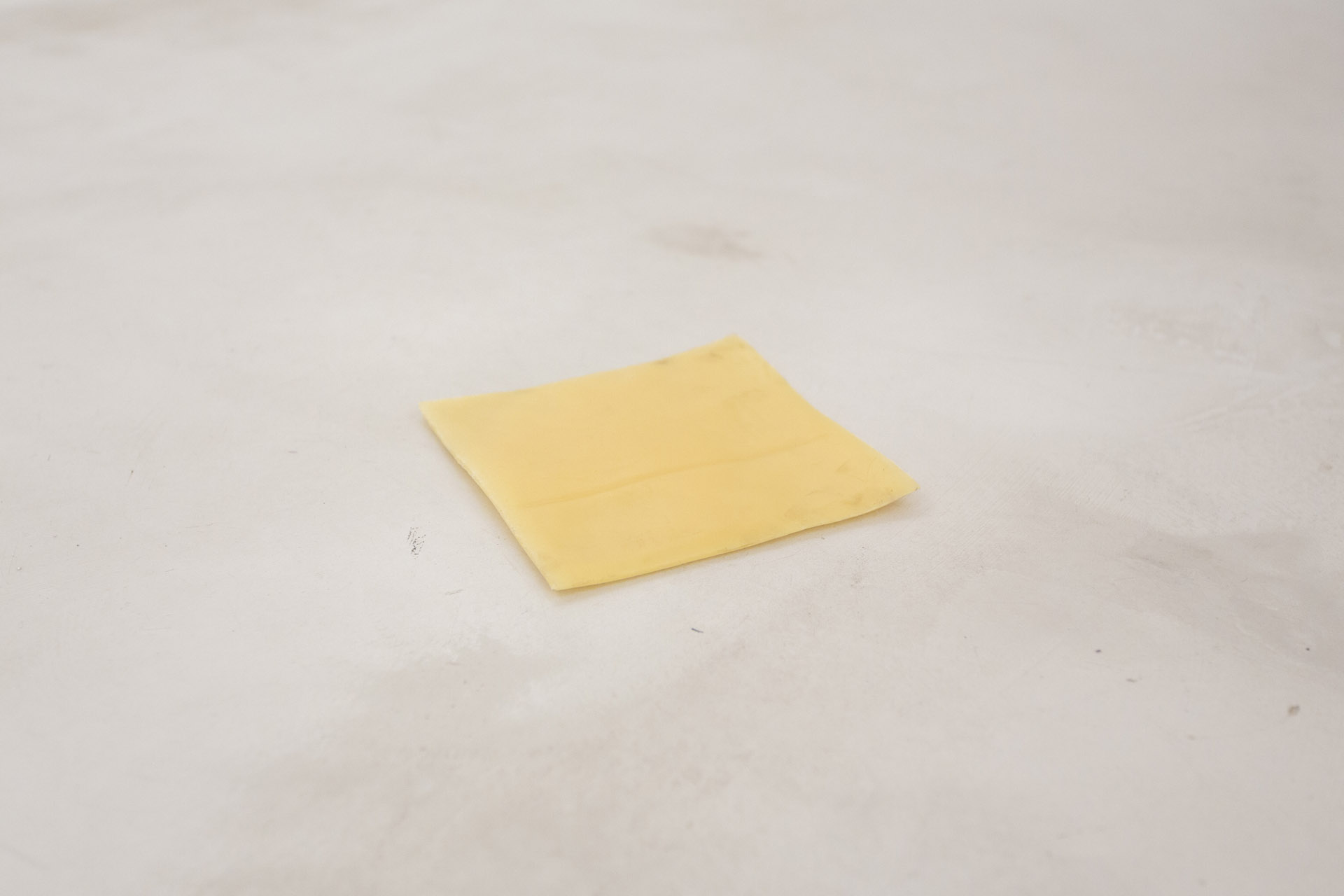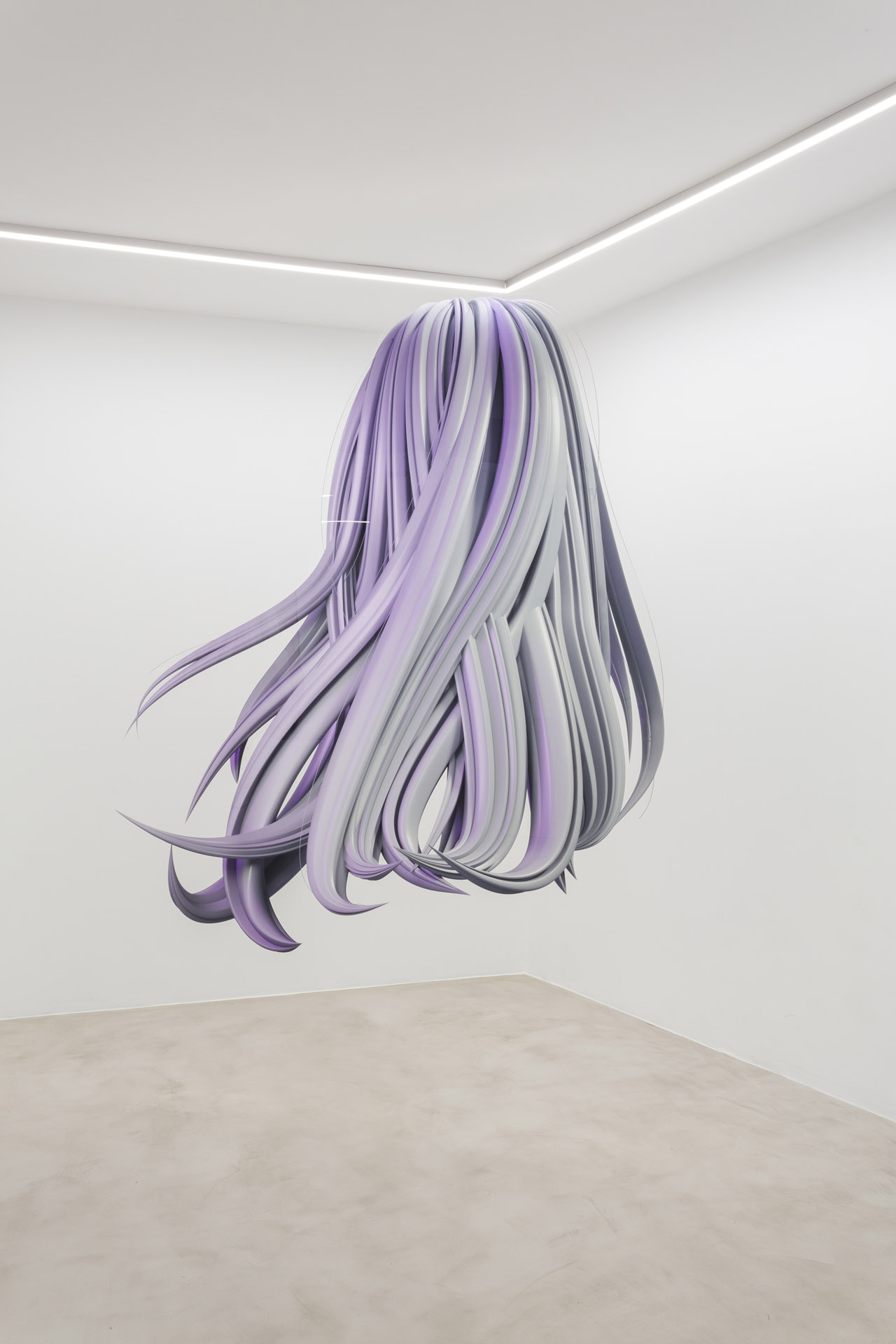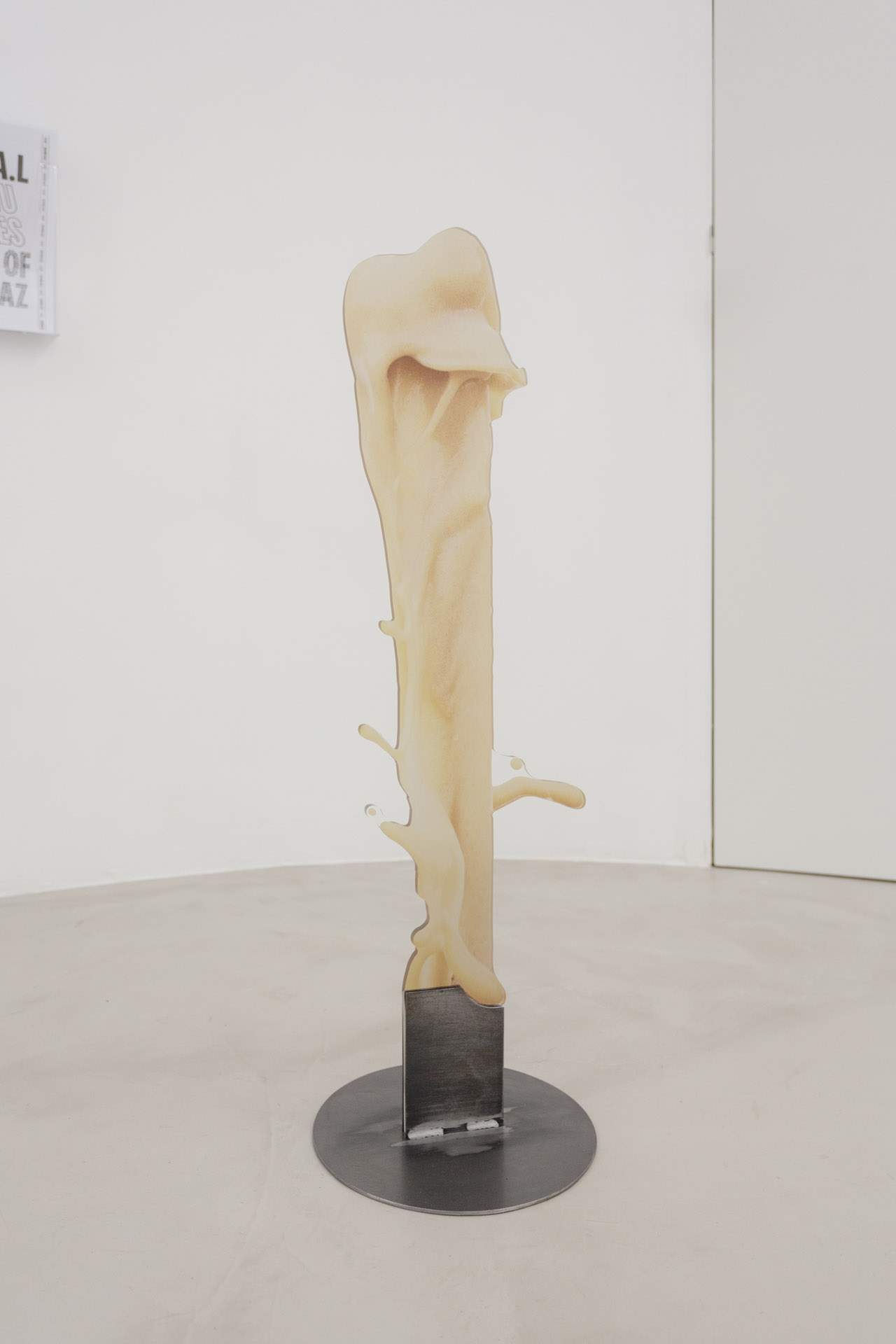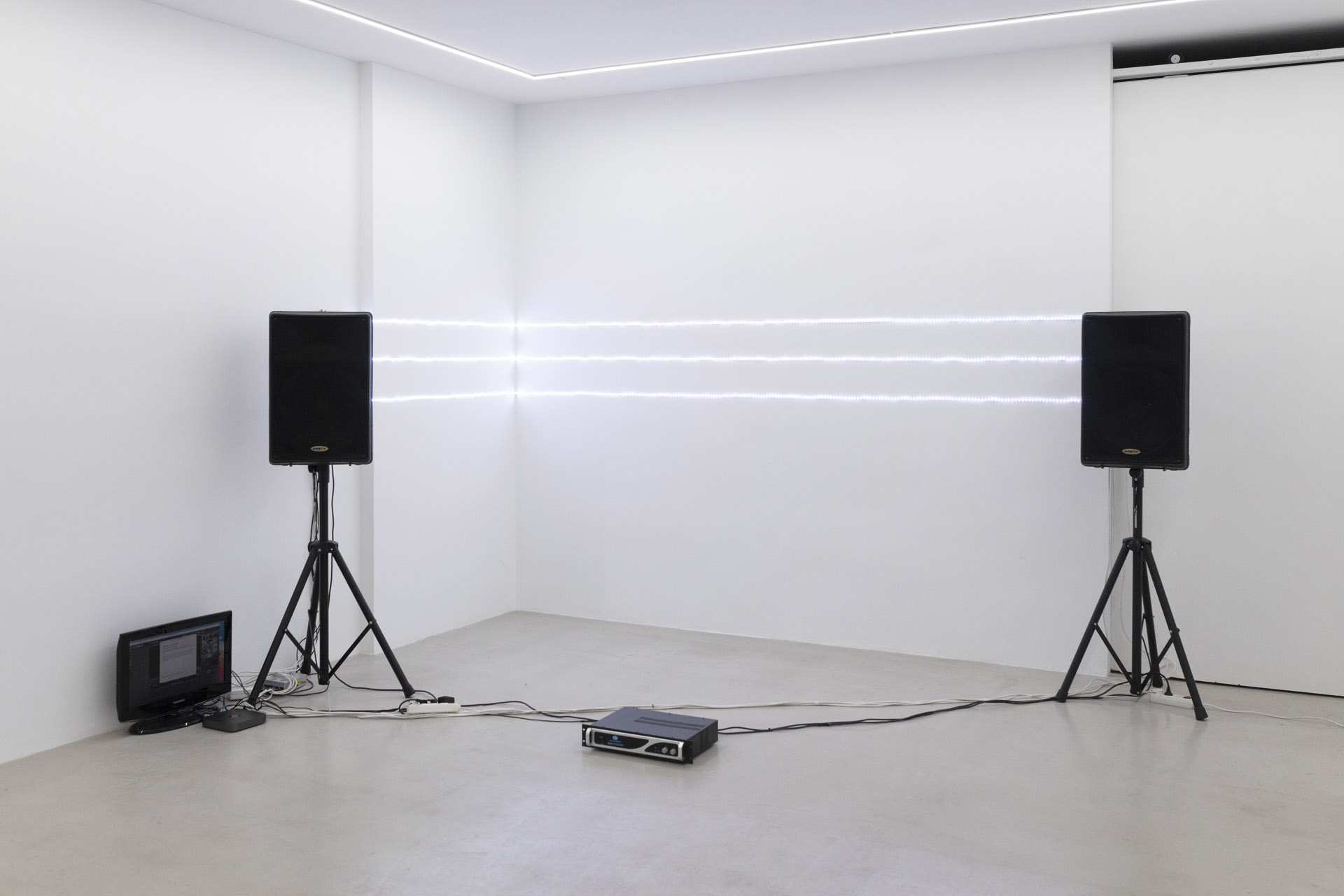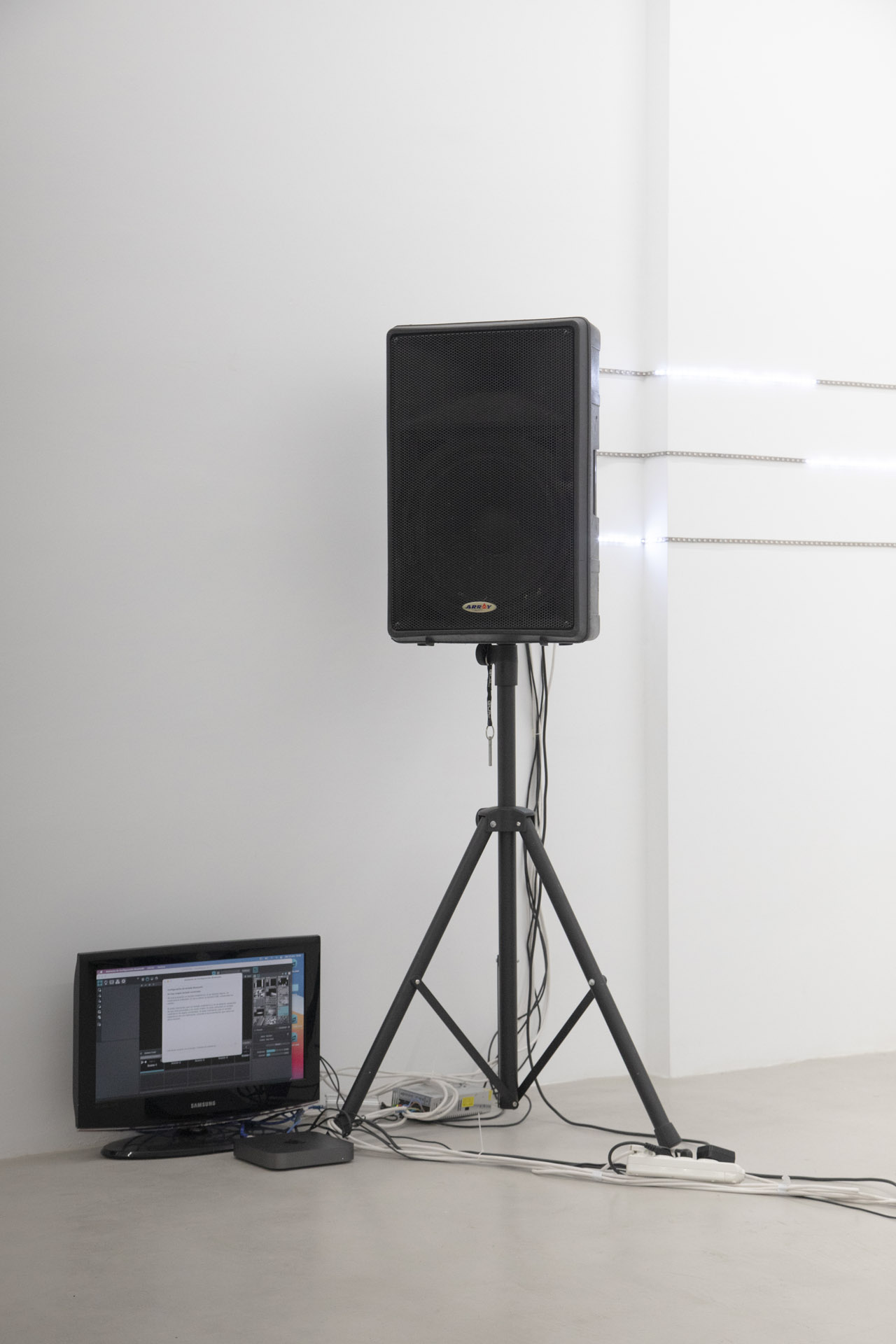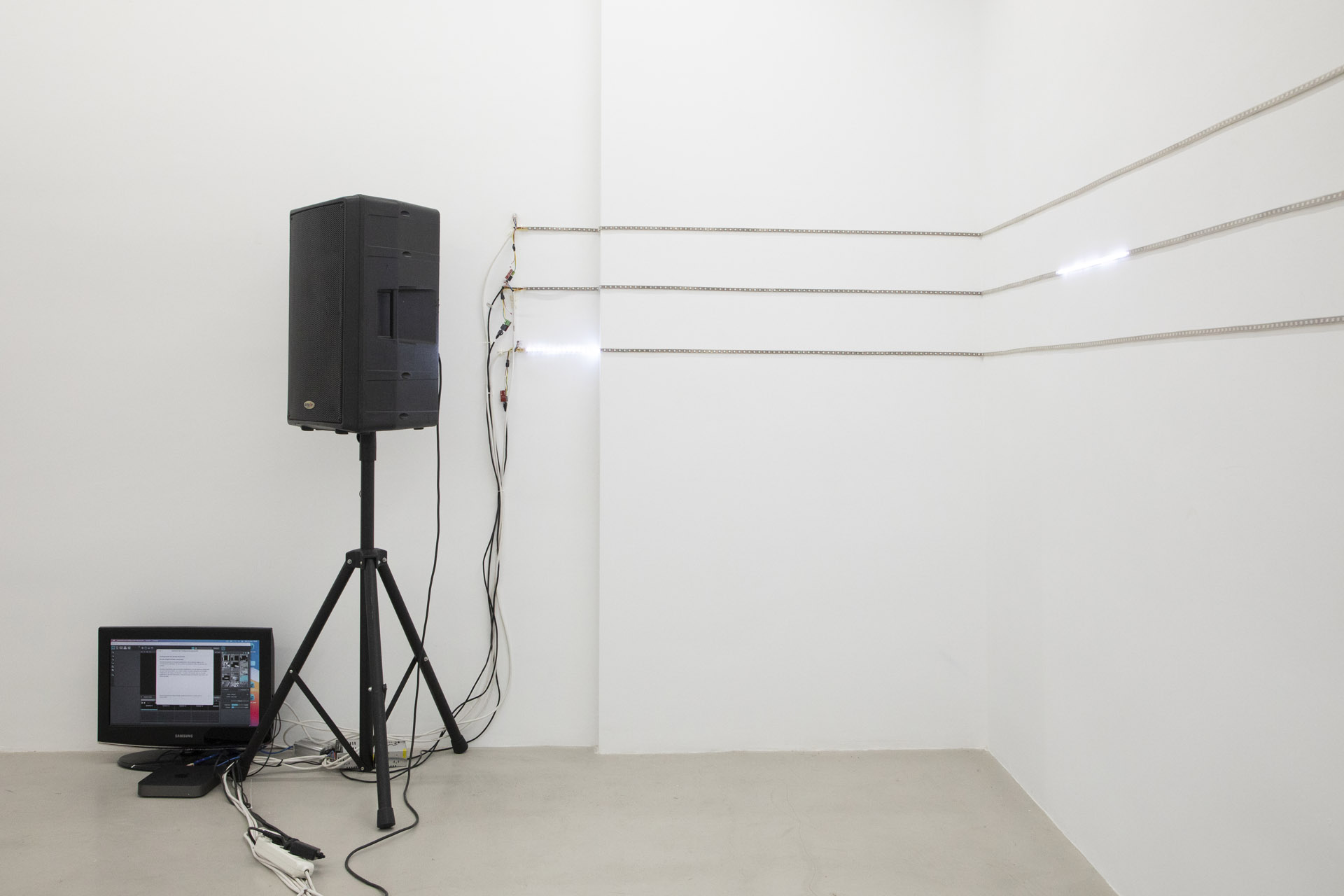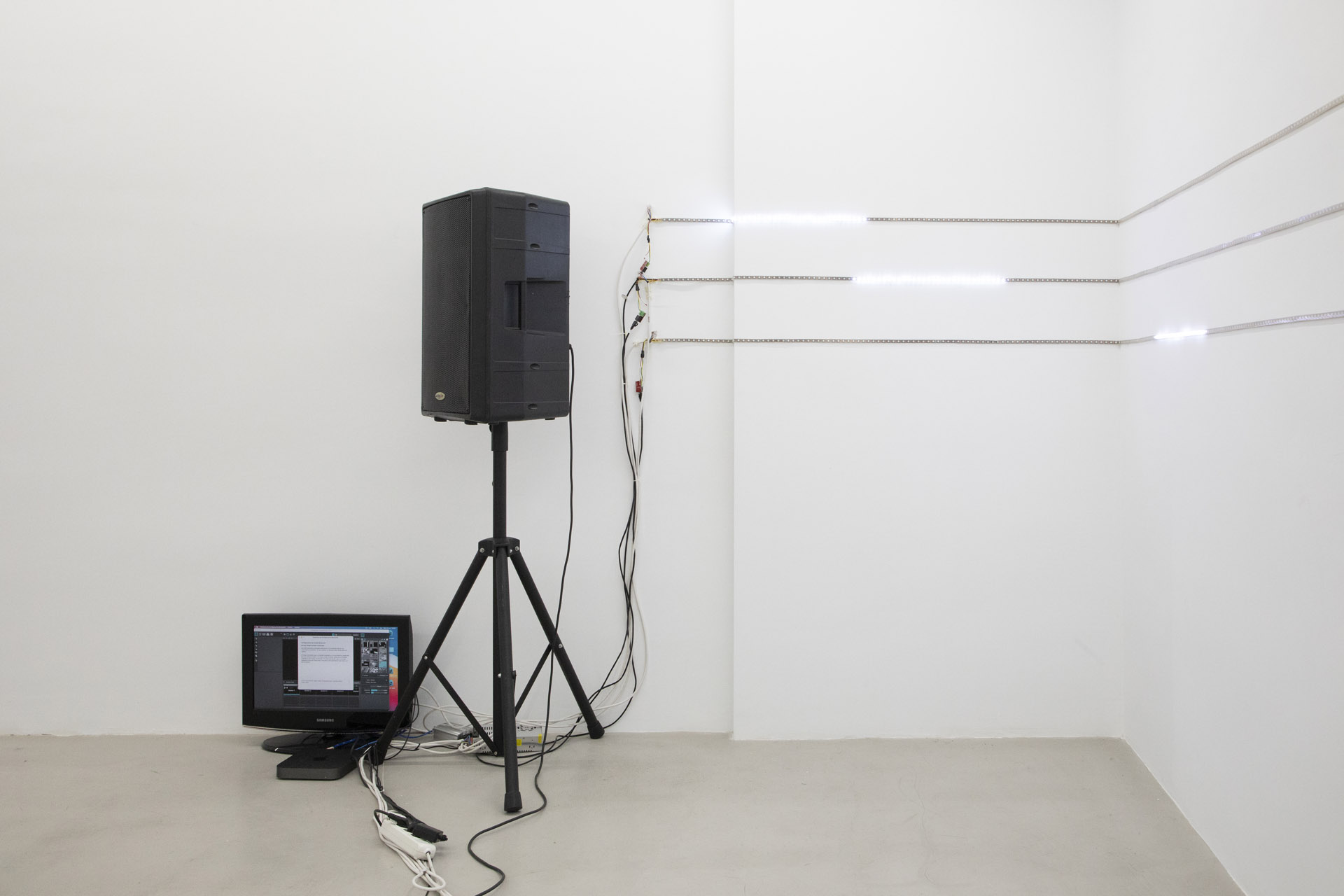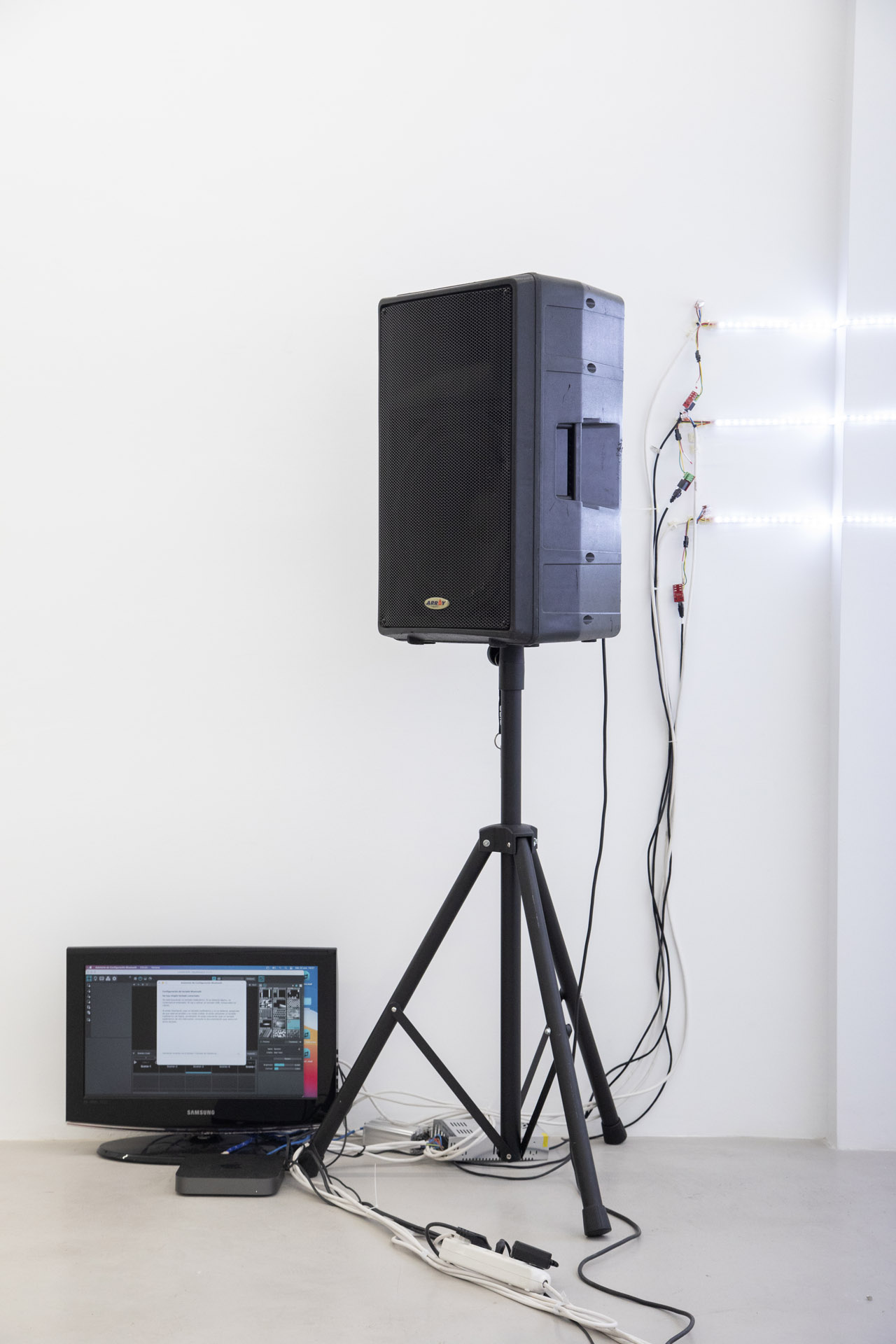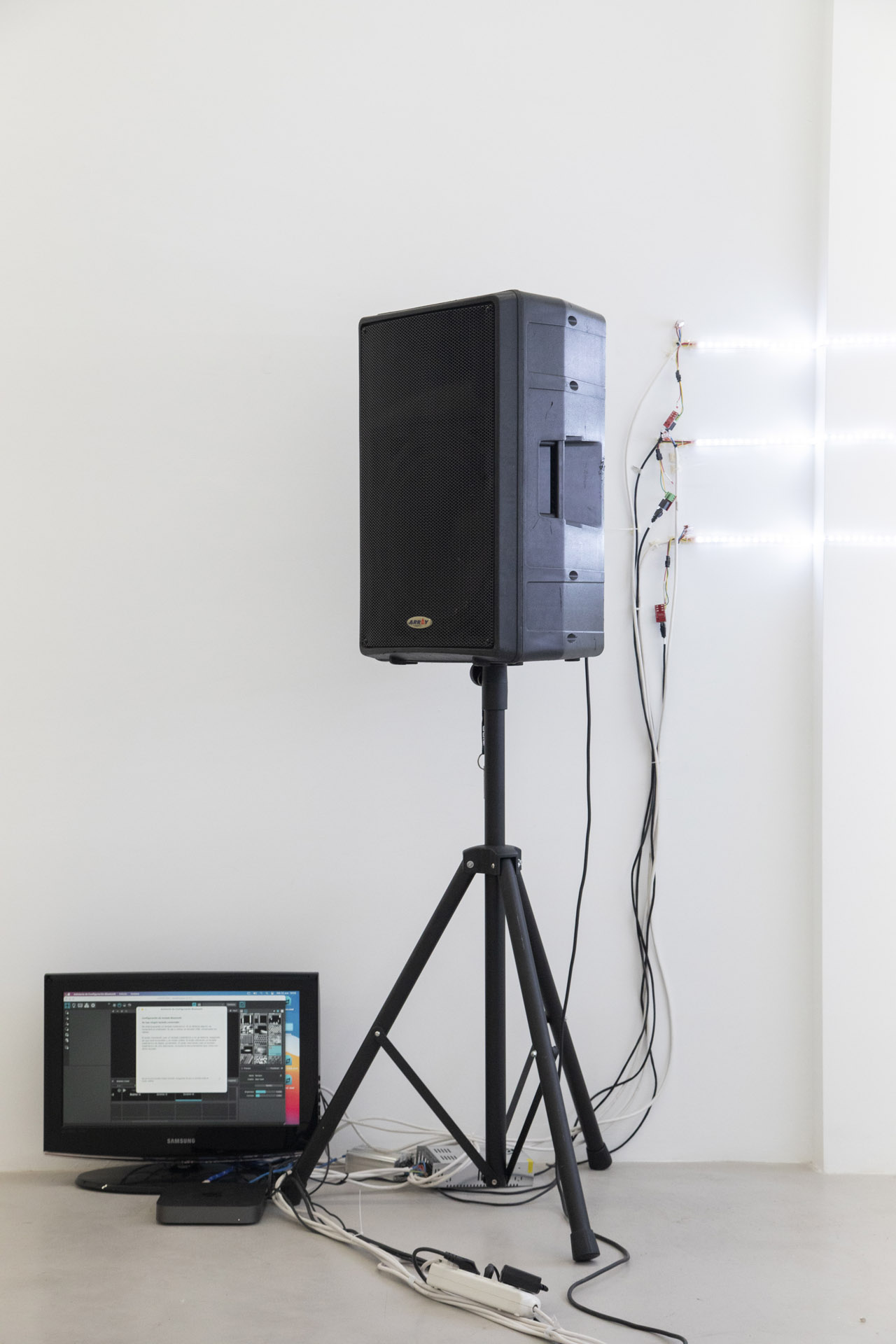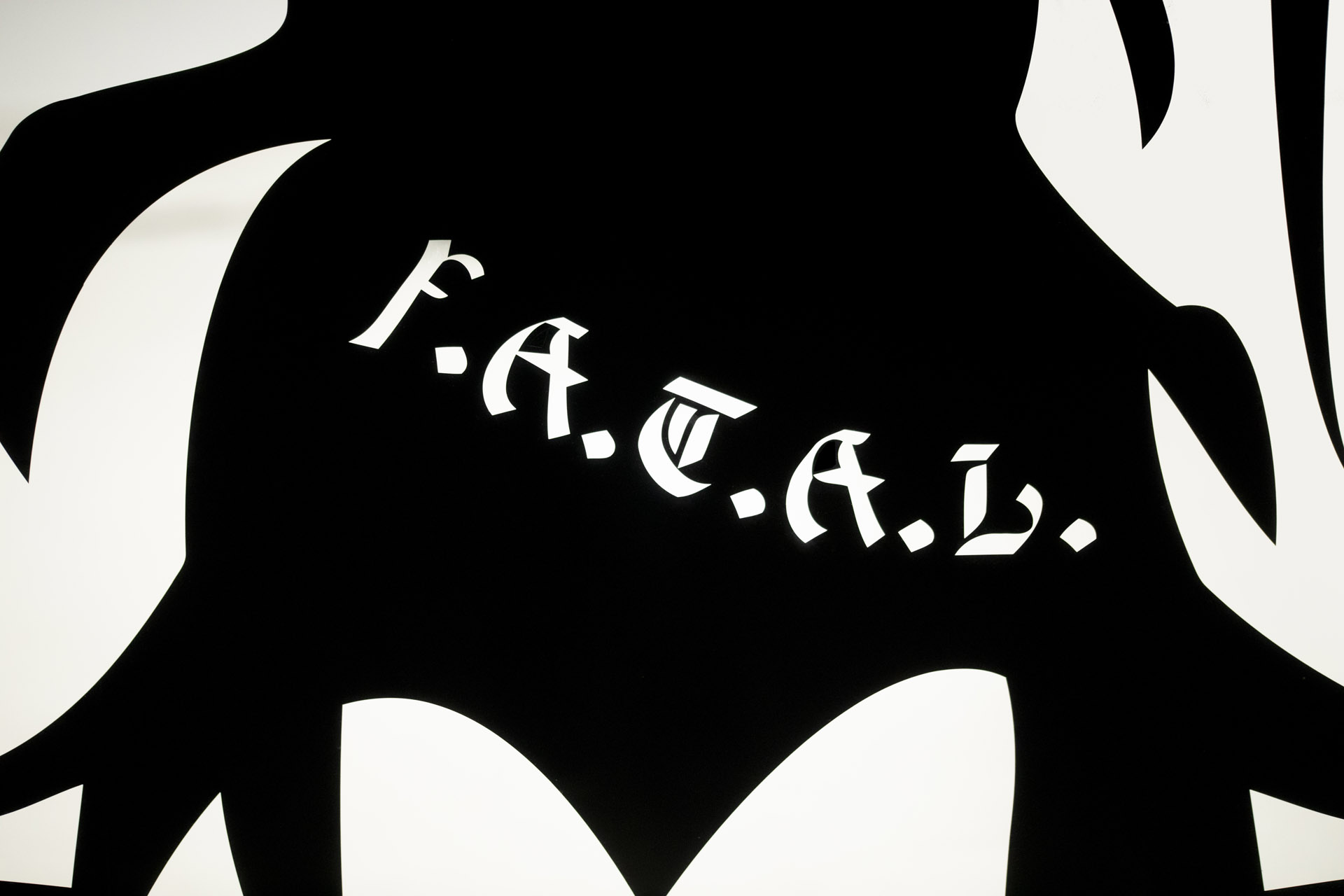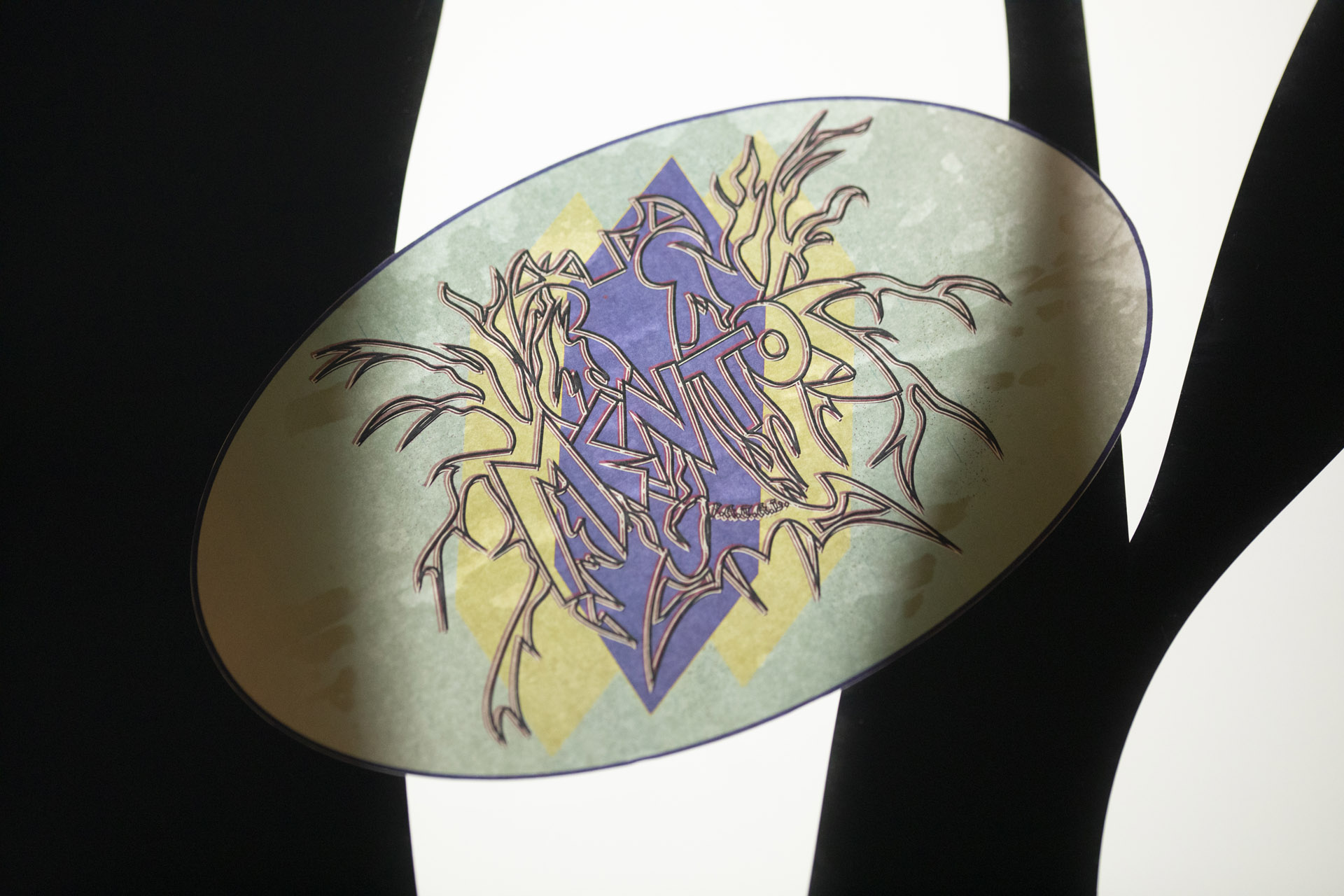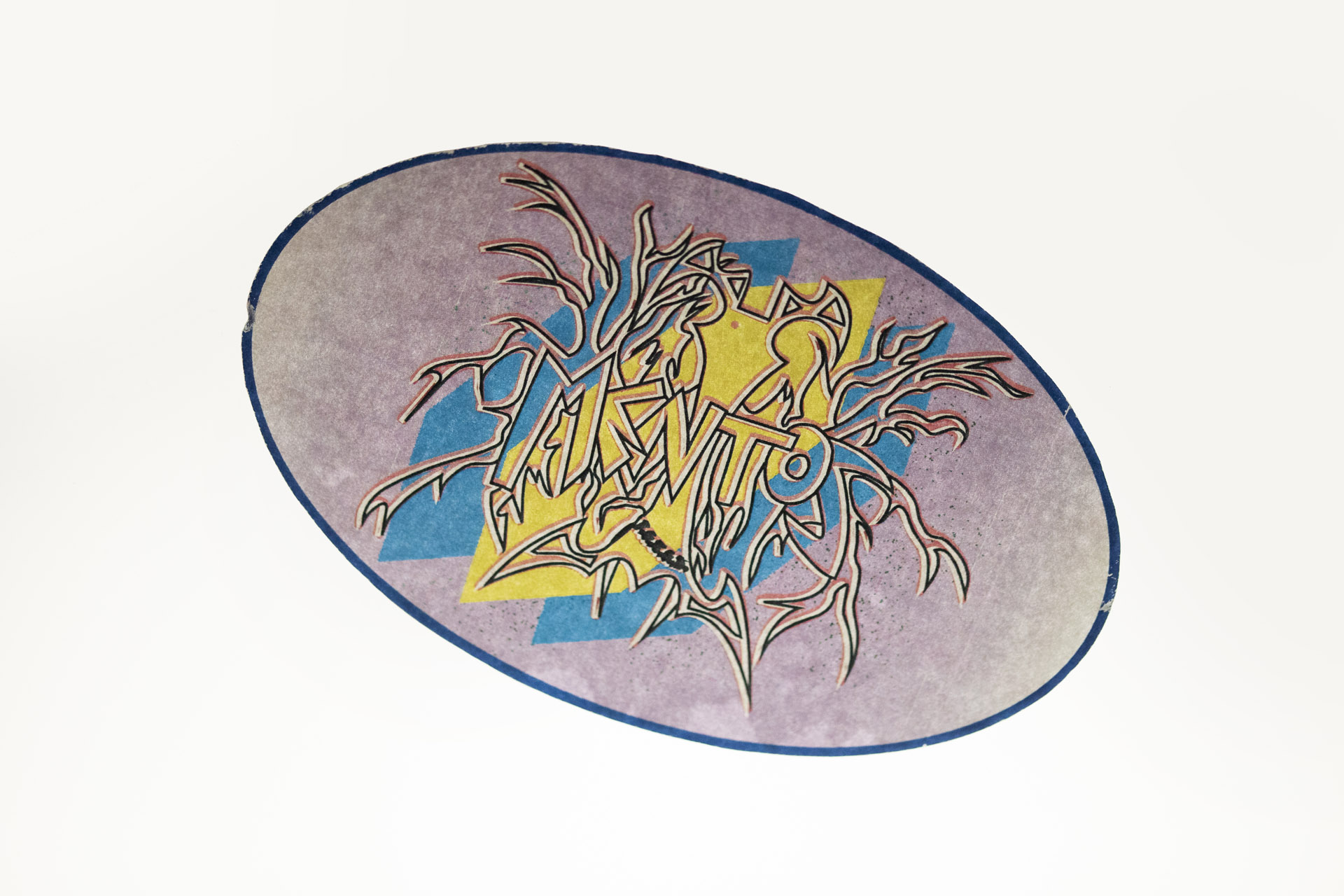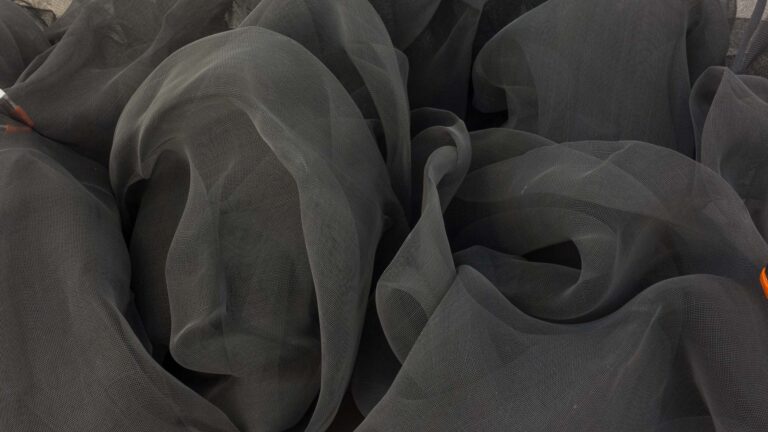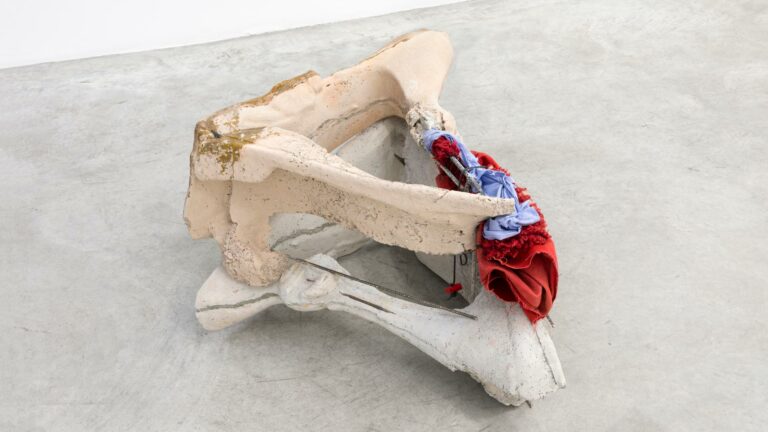Artists: Momu & No Es
Exhibition title: F.A.T.A.L.
Venue: House of Chappaz, Valencia, Spain
Date: December 10, 2021 – February 17, 2022
Photography: all images copyright and courtesy of the artists and House of Chappaz, Valencia
Note: Exhibition booklet is available here
Like a slice of cheese…
“One of those dark days (…), when all the apartments are more like a cave and their dwellers like troglodytes lost in the shadows.”
Sergei R. MINTOLOV, The Mystery of the Walls, 1906
First crystallization. The transformation of the earth’s crust.
“What guides poetic thinking is the conviction that although the living is subject to the ruin of time, the process of decay is at the same time a process of crystallisation.”
Hannah ARENDT, Introduction to Walter Benjamin, Illuminations: Essays and Reflections, 1955
“Everyone knows what colours mean: A tiny section of the light spectrum. But no matter how small this section may be, we wouldn’t give it up.”
Paul SCHEERBART, Glass Architecture, 1914
The idea of transparency is one that comes down to us from the modern movement: that architecture made of glass and steel that proposed a transformation of society and the world it inhabited. We could ask ourselves if the changed produced have been really worth mentioning, but I believe that few would deny the transformation of the world and the role humans have played in this transformation.
The notion of transparency, which would be analysed by Dan Graham as he spoke of the modern movement being assimilated by American bourgeois urbanism, put forward not only this hypervision which cut through everything, but also a cleaning, an aesthetic notion in which asepsis and the absence of contact generated by these same element, which allowed the eye to pass through them but not the body, encouraged a hierarchical classification of spaces.
Geometry, monochrome, order… nothing further from the vision of its pioneer, the architect, poet and Science Fiction author, Paul Cheerbart had in mind: “The face of the earth went through a profound change from the moment at which glass architecture took over completely from brick architecture. It was as if the earth decked itself with the enamel and diamond jewellery.” Coloured glass, transforming our vision, educating our eye to perceive ultraviolet, glittering in the night, but above all, mutating every surface of our planet.
It’s strange how mutation is inherent to all utopias, new landscapes inhabited by new individuals, improved versions of humanity that have been capable of perfecting their own surroundings. Today the possibility of improvement is immense, above all if we bear in mind how we have transformed our planet. I don’t believe that Scheerbart was conscious of the capacity for change that he himself announced, the anthropocene.
As a species we have always measured the world from our scale and paradigm, but we have never managed to mould it to ourselves in such a traumatic way. Reification has been invading everything, converting the landscape into a huge speeding archaeological site while, at the same time, solidifying its ruin.
“Rocks growing slow-mo
Crystalline
I conquer claustrophobia”
Bjork, Crystalline, 2011
Doubt
“(…) the distinctive thing about eXistenZ is the idea -in a certain sense stranger and more disturbing than the idea that reality is a farce- subjectivity is a simulation. There is an absolute difference between the “thing-for-itself” and what Sartre called the “thing-in-itself”: the inert world of things stripped of consciousness.”
Mark FISHER, “You’re not going to be able to stop yourself, you may even enjoy it”, The ghosts of my life: writings on depression, hauntology and future losses, 2014
“This is a lonely illusion This is my only delusion This is the realm of my wildest dreams”
Roisin murphy, Simulation, 2012
Doubt, the sixth of the seven phases into which Stendhal divides falling in love, is found between the first and the second crystallization. After maximum sureness the only thing to be found is doubt, given that reality and your truth are too inassumable.
Or it may be that our reality surprises us so much that the only thing left to us is to question it and discover the mechanisms that have lead is to that point. This is one of the elements that articulate the work of the collective Momu & No Es, made up of Lucía Moreno (Basilea, 1982) and Eva Noguera (Barcelona, 1979). Following this line of research, many of their works revolve around the attempt to understand what constitutes a mentality. Is it body? Is it an account? What are the modes of communication? The relation? Our habitat? The motor may be the difficulty we have in saying who we are and what makes us so.
We all know that the internet and applications have transformed out way of relating to each other, changing our language and also the way in which we perceive ourselves. But what happens when the virtual world is our only bridge of communication and our surroundings end up limited to our room?
“This brings us to what might be the fundamental utopic debate as to subjectivity, namely, if the utopia in question proposes the type of radical transformation of subjectivity proposed by most revolutions, a mutation of human nature and the appearance of completely new beings; or if the impulse behind utopia isn’t already based on human nature”
Fredric Jameson, Archaeologies of the Future, 2009
Second crystallization
“Object play—for adults as well as children—engages the heart as well as the mind; it is a source of inner vitality. When literary theorist Roland Barthes writes that the objects of disciplinary society come to seem natural, what is most important is that what seems natural comes to seem right.
We forget that objects have a history. They shape us in particular ways.”
Sherry TURKLE, Evocative Objects. Things We Think With, 2007
During the pandemic we have all felt that feeling of being trapped in the hiding place that our closest surroundings become. We experience a tedious Armageddon in silence while our reality became stranger and stranger before our very eyes. Objects became marker buoys, handles on which we grasped to calm our disquiet while everything else change: viruses, routines, bodies, emotions… and this communication heightened what technology offered us becoming our only means of contact.
Our eyes became used to a new transparency and the images given to us by the screens crystalized once again, the last stage or, even, a chapter passed, in which we find the ruins of our own civilization. Our collective imagination solidified in a methacrylate amber. A grotto, like the caves o Naica, where you pass through crystallizations, natural architectures as rough as those which our mental reclusion was trapped in.
In House of Chappaz we show you the exterior and interior of this ruin. A closed business, shut down by the crisis, where every afternoon we are allowed to see that something is still alive inside, maybe the glow of these fossils which, abandoning any function, simply offer us forms and memories. Like that fragment of video that has been caught in a loop. A supercut of references: Mentos, Coca-Cola drinks, slices of cheese able to pass under the crack of a door and feed us in confinement.
Suggestive objects that call to us, with their own soundtrack, making us reflect upon what others think of us, if, sometime, someone takes the trouble to come down and find something we can populate our worlds with.
-Eduardo García Nieto, curating y education.




